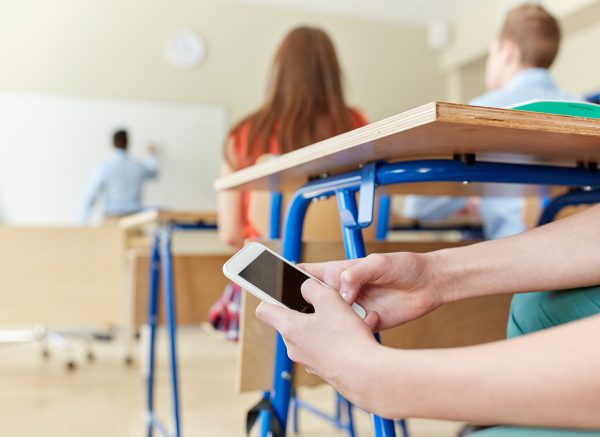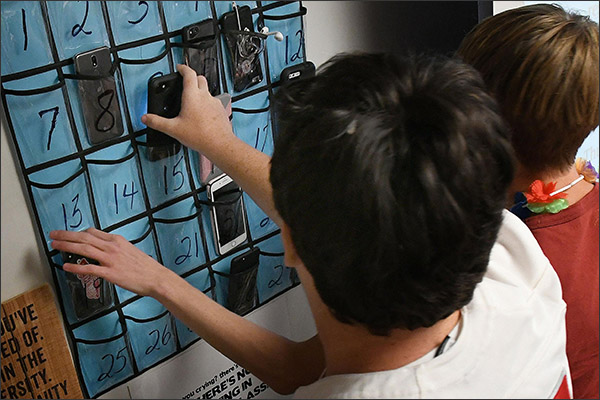Picture this, tired teenagers sitting in a classroom, trying to focus on a big assignment but constantly being distracted and concerned by the buzzing of someone’s phone. It’s astonishing how a small rectangle can grab your attention faster than lightning. On the lighter side of this controversial issue, you can find students gathering around a desk while laughing and smiling about a Youtube video being played on someone’s cell phone. With the increasing prevalence of smartphones, their presence in classrooms has become a nationwide scandal. What do you think?

Let’s be realistic, the use of smartphones in classrooms has been a topic of debate among educators and parents alike, teenagers, and even children. People bicker about how phones should be banned from classrooms, while others believe they can be used as valuable learning tools. DHS English teacher, Mrs. Hesburgh voiced her opinion during a short interview. I asked her “How do you feel about the use of cell phones during class?” She responded, “For me, it is a distraction. I have used phones previously as an instructional tool (using Snapchat for annotations, for example), and I know kids can get pretty much the same notifications on their phones as they do on their computers, but I do think there’s value in disconnecting as much as possible during class.” Mrs. Hesburgh has used technology as a tool and shared that she believes it’s beneficial to disconnect and be present in the moment. One argument against allowing phones in classrooms is the potential for distraction. I myself have been tempted to check social media or play games instead of paying attention to the lesson. It is natural human behavior but this can lead to a decrease in academic performance. As technology continues to grow, as AI grows, staff of any high school or classroom will have to make a hard decision.
The “villainous” smartphones can also offer benefits in educational settings. They do provide instant access to information, enabling students to conduct research on various topics quickly. To the haters of cellphones, educational apps and online resources can enhance learning experiences by providing interactive content and practice exercises. Banning phones from classrooms may not be practical or realistic in today’s digital age. The technology is only getting more and more advanced from here. Many students rely on their smartphones for communication and organization purposes throughout the day.
An article called “Weighing the Costs and Benefits of Cellphones in School” by Emily Boudreau talks about maybe technology and cellphones aren’t a big, bad, wolf after all. An alumni featured in the article from Harvard University, Dylan Lukes, shares his beliefs. “The motivation for many of these policies comes from a desire to limit distractions. If you think about it, from a school’s perspective, if a cellphone ban can improve student learning, that’s a great low-cost intervention with a favorable benefit-cost ratio.”

Whether phones should be allowed in classrooms depends on finding a balance between their advantages and disadvantages. While distractions are a concern, smartphones also offer valuable learning opportunities if used responsibly. Educators must carefully consider how best to incorporate these devices into their teaching strategies while maintaining an engaging and focused classroom environment. What do you think should be the standard at DHS?








